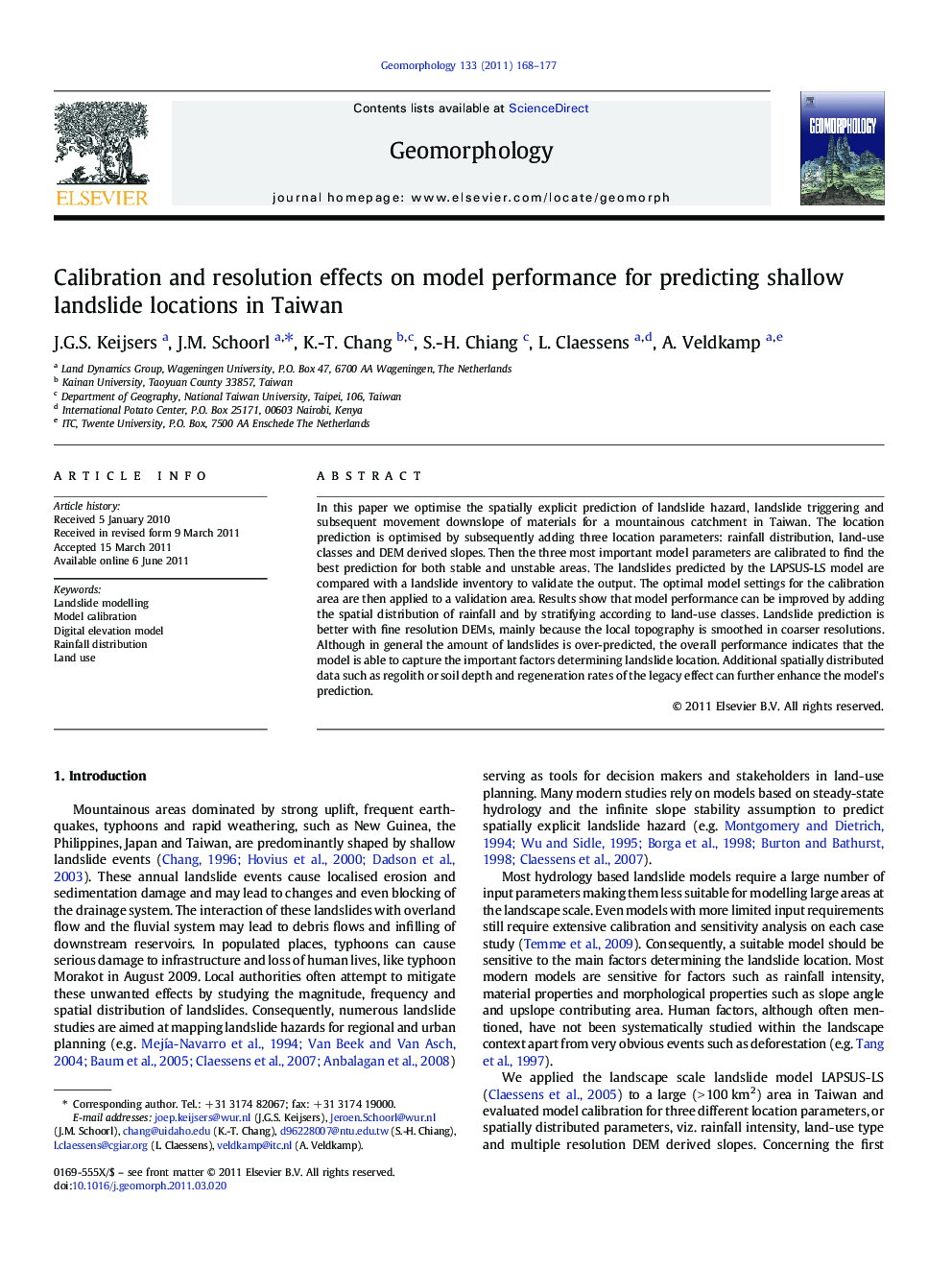| Article ID | Journal | Published Year | Pages | File Type |
|---|---|---|---|---|
| 4685550 | Geomorphology | 2011 | 10 Pages |
Abstract
In this paper we optimise the spatially explicit prediction of landslide hazard, landslide triggering and subsequent movement downslope of materials for a mountainous catchment in Taiwan. The location prediction is optimised by subsequently adding three location parameters: rainfall distribution, land-use classes and DEM derived slopes. Then the three most important model parameters are calibrated to find the best prediction for both stable and unstable areas. The landslides predicted by the LAPSUS-LS model are compared with a landslide inventory to validate the output. The optimal model settings for the calibration area are then applied to a validation area. Results show that model performance can be improved by adding the spatial distribution of rainfall and by stratifying according to land-use classes. Landslide prediction is better with fine resolution DEMs, mainly because the local topography is smoothed in coarser resolutions. Although in general the amount of landslides is over-predicted, the overall performance indicates that the model is able to capture the important factors determining landslide location. Additional spatially distributed data such as regolith or soil depth and regeneration rates of the legacy effect can further enhance the model's prediction.
Related Topics
Physical Sciences and Engineering
Earth and Planetary Sciences
Earth-Surface Processes
Authors
J.G.S. Keijsers, J.M. Schoorl, K.-T. Chang, S.-H. Chiang, L. Claessens, A. Veldkamp,
